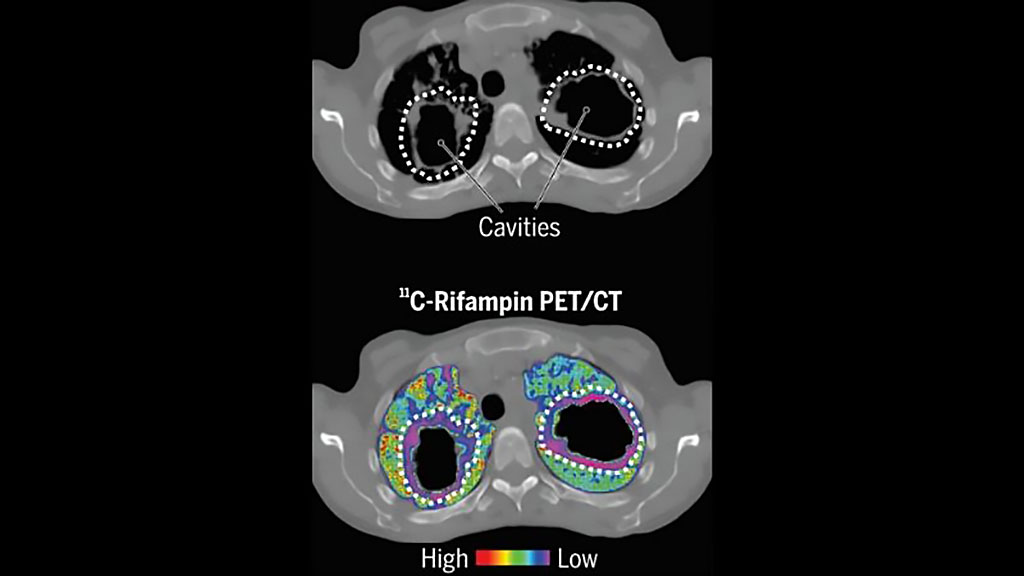PET and CT Scans Could Shorten TB Treatment
By MedImaging International staff writers
Posted on 05 Mar 2020
A new imaging tool combines positron emission tomography (PET) and computed tomography (CT) to noninvasively measure the effectiveness of rifampin, a key tuberculosis (TB) drug. Posted on 05 Mar 2020
Developed by researchers at Johns Hopkins Medicine (Baltimore, MD, USA), Fred Hutchinson Cancer Research Center (Seattle, WA, USA), and other institutions, the noninvasive imaging technique, called dynamic 11C-rifampin PET/CT, can open a clearer window on the previously hidden battle taking place between microbe and rifampin in the lungs by more precisely tracking, over time, the pharmacokinetics of rifampin at infection sites in order to optimize antimicrobial dosing and shorten TB treatments.

Image: Dynamic 11C-rifampin PET/CT imaging can aid tuberculosis treatment (Photo courtesy of Johns Hopkins Medicine)
For the study, 12 newly identified patients with rifampin-susceptible pulmonary TB were studied to explore the dynamic 11C-rifampin PET/CT tool. Participants were first given an injected microdose of 11C-rifampin that was tracked by PET to determine the drug's concentration over time in TB-infected lesions in the lungs and other body areas. Patients were then given untagged rifampin at the recommended treatment dosage level, and blood was drawn at various times and the levels of rifampin were measured by mass spectrometry. This showed that the microdose amount of 11C-rifampin accurately represented the behavior of the traditional clinical dosage.
The results of the PET scan data revealed that the amount of 11C-rifampin uptake was lowest in the walls of the TB-caused lung lesions and cavities, less than half what was seen in uninfected lung tissues. The findings were recapitulated by PET-CT in experimentally infected rabbits with cavitary TB and confirmed using postmortem mass spectrometry. The PET concentration-time profiles were also used to provide estimates on the rifampin dosing required to achieve cure in four months. The study was published on February 17, 2020, in Nature Medicine.
“While most TB patients are successfully treated with drug regimens which include rifampin, it still takes at least a six-month course to cure the disease,” said senior author Professor Sanjay Jain, MD, of Johns Hopkins Medicine. "We now have evidence that imaging the lungs with PET and CT scans may help researchers and physicians better determine how much rifampin is reaching the bacteria over time, and then use the data to steer decisions for speedier and more effective TB-fighting measures such as higher doses of the drug.”
A serious treatment issue for TB is that the infectious agent, Mycobacterium tuberculosis, protects itself by acting like a microbial mole, burrowing safe-haven cavities in the lungs. The cavities are carved by the same activity that the TB bacteria use to produce pneumonia. As the process also destroys blood vessels and builds up scar tissue in the area surrounding a cavity, it can be difficult for anti-TB drugs travelling through the bloodstream to reach the microbes nested inside. The characteristic pulmonary lesions can be seen as spots on CT scans.
Related Links:
Johns Hopkins Medicine
Fred Hutchinson Cancer Research Center














